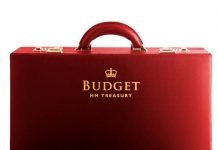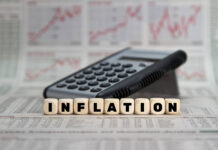- European equities trade near opening levels with the German Dax outperforming (+0.5%). US stock markets open on a weak footing following the long Labour Day weekend as the explosive relation with North-Korea weighs on risk sentiment.
- Russian President Vladimir Putin has lambasted Washington and Seoul’s drive to toughen sanctions against North Korea, adding that Pyongyang would "eat grass" rather than simply give up its nuclear programme.
- Washington Fed-based governor Brainard said the US central bank needs to pay careful attention to underlying inflation before raising interest rates again, as longer-run price pressure trends appear to be lower.
- Britain’s economy is falling further behind a fast-recovering euro zone as firms worry about Brexit and consumers feel the pinch of rising inflation and the weak pound. The August services PMI declined more than expected, from 53.8 to 53.2. The final EMU services PMI was downwardly revised from 54.9 to 54.7.
- Switzerland’s economy grew at its slowest annual rate in nearly eight years in the second quarter, according to data likely to reinforce expectations that the Swiss National Bank will keep monetary policy ultra-loose when it meets next week.
- German Chancellor Angela Merkel said European Union leaders should decide whether to suspend or end membership talks with Turkey at its summit next month, backtracking from her call to end accession talks.
Rates
US Treasuries take strong start
US and German bonds eke out moderate to minor gains in a session devoid of key economic news. US Treasuries opened higher in a catching up move linked to the North Korean nuclear threat. Following a stabilization, a second leg higher occurred shortly after the speech of Fed governor Brainard (14h30), which might have been the trigger of the move, even if some legitimate doubts remain timing-wise and cross markets. Brainard, a dove, is concerned about persistent low inflation and wants more evidence that inflation will move to target before raising rates further. She said the current neutral real FF rate may be close to 0% and the long run one close to 1%. This suggests the Fed has time to resume its tightening and may go still more gradual than previously thought. Of course, Brainard’s view is only one and we hope to get more info when NY Fed Dudley, a key player, speaks later this week. The Bund opened unchanged and tested the downside, but when equities came off intra-day highs, the Bund marched higher in a long gradual climb. The Bund continued to advance also when equities slid in sideways trading mode.
At the time of writing, German yields drop between 1.2 bp (2-yr) to 1.9 bp (30-year). US bonds outperform German bonds, even taking into account yesterday’s small dip of German yields. US yields decline by 3.2 bps at the 2-yr to 5.7 bps at the 10-yr tenor. In the intra-EMU bond markets 10-yr yield spreads are virtually unchanged.
Fed governor Brainard gave a speech at the NY Economic club. She is happy with the state of the economy, but sounds concerned about the persistent shortfall of inflation vis-à-vis the Fed’s symmetrical 2% target. She downplays the impact of transitory factors on inflation, as the shortfall is persistent for 5 years. The underlying inflation is lower than before the crisis, contributing to the shortfall of inflation from the objective. The reason for that may be the experience of persistency of below target inflation which affects the perception of households and firms of underlying inflation. The Phillips curve is flatter than before. Monetary policy setting should take into consideration the persistency of the inflation shortfall. She sees the balance sheet tapering as a passive instrument to work in the background and to focus on the interest rate tool to help inflation towards target. Brainard pleads for cautiousness about tightening rates further until the Fed is confident inflation is on track to achieve the inflation target. She sees indications that the neutral rate of interest is very low currently and low relative to historic norms in the longer run and speaks about a zero real rate now and 1% long run FF rate in the long run (which would translate in a 1.5% nominal FF rate, now 1.125%, and a 3% in the long-run. "For these reasons, my current expectation is that the short-run neutral rate of interest may not rise much over the medium term. But this is an open question and bears close monitoring." She is aware that monetary policy may result in overextended asset prices and sees some signs of that. It calls for vigilance, but they aren’t accompanied by excessive leveraging.
Currencies
Dollar maintains a soft bias
The eco data didn’t provide a clear guide for EUR/USD or USD/JPY trading. The EMU data were slightly softer than expected, but EUR/USD hovered around the 1.19 pivot as investors await Thursday’s ECB meeting. US investors returned from the long weekend in a cautious risk-off mood, keeping USD/JPY near the 109 level.
This morning, Asian markets traded mixed awaiting the next developments in the Korean crisis. The yen maintained a cautious bid as Japanese equities underperformed. USD/JPY dropped to the 109.25 area. EUR/USD was again little affected, trading just north of 1.19.
The euro showed some intraday swings during the European session. A first down-move occurred when the EMU PMI’s were revised lower from the preliminary reading. However, we doubt it was the real reason behind the euro decline. There were other such swings later in the session without any concrete eco data behind. Interest rate differentials were also no obvious driver. We consider the moves as ST position adjustment ahead of Thursday’s ECB meeting.
The dollar lost some further momentum in early US dealings. Soft comments from Fed’s Brainard (she is on the dovish side of the Fed spectrum) were a slight USD negative. Lingering political uncertainty in Washington and globally (Korea) and a downward bias in US yields didn’t help the dollar. However, after all, the changes in the major dollar cross rates were again limited. No technically relevant levels were challenged. EUR/USD continues trading in well-known-territory near 1.19. USD/JPY returned to the 109.15/20 area. The trade-weighted dollar holds within reach of the recent lows indicating that sentiment in the US currency remains fragile.
Sterling resumes technical rebound
The technical rebound of sterling took a breather yesterday but resumed today. The UK data didn’t provide a valuable explanation. The UK August services PMI declined slightly more than expected from 53.8 to 53.2 (53.5 was expected). As is the case for EUR/USD, we see current GBP price action mainly as technical in nature. Last week’s Brexit negotiations didn’t yield any concrete progress and this issue will return to the forefront but sterling shorts apparently are taking some chips of the table, in particular against a strong euro. EUR/GBP drifted south and trades currently in the 0.9155 area. Cable is changing hands just below the 1.30 mark.














